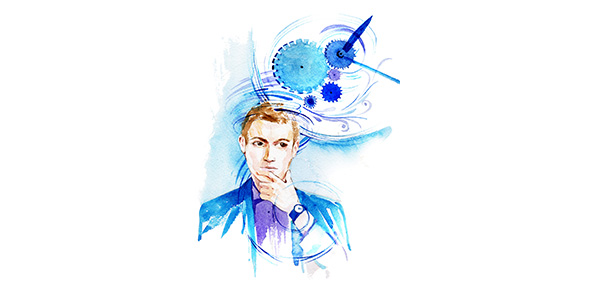Related Flashcards
Related Topics
Cards In This Set
| Front | Back |
|
A panic disorder that involves
intense fear and avoidance of any place or situation
where it is perceived that escape
might be difficult or help unavailable in the event of
developing sudden panic-like
symptoms. The fear can especially be directed towards
situations in which feelings of
panic have occurred before. These situations may
include driving, shopping,
crowded places, traveling, standing in line, meetings,
social gatherings and even being
alone.
|
Agoraphobia
|
|
A progressive disorder that
gradually destroys a person’s memory and ability to
learn, reason, make judgments,
communicate and carry out daily activities.
Individuals with more advanced
stages of Alzheimer’s disease may also experience
changes in personality and
behavior such as anxiety, suspiciousness or agitation, as
well as delusions or
hallucinations. The disease usually starts in middle or old age,
beginning with memory loss
concerning recent events and spreading to memory loss
concerning events that are more
distant.
|
Alzheimer’s
Disease
|
|
Chronic feelings of overwhelming
anxiety and fear, unattached to any obvious
source, that can grow
progressively worse if not treated. The anxiety is often
accompanied by physical symptoms
such as sweating, cardiac disturbances, diarrhea
or dizziness. Generalized anxiety
disorder, panic disorder, agoraphobia, obsessive/compulsive disorder and
posttraumatic stress disorder are considered anxiety
disorders
|
Anxiety
Disorders
|
|
A Pervasive Developmental
Disorder (PDD) characterized by normal language and
intelligence development, but
impaired social and communication skills as well as
difficulty with transitions or
changes. Individuals with Asperger’s Syndrome often
have obsessive routines and may
be preoccupied with one particular field of interest.
Although they may be low
functioning in many areas, they often have above-average
performance in a narrow field.
|
Asperger’s
Syndrome
|
|
A biologically-based disorder
that includes distractibility and impulsiveness. Recent
research suggests that ADD can be
inherited and may be due to an imbalance of
neurotransmitters (chemicals used
by the brain to control behavior) or abnormal
glucose metabolism in the central
nervous system.
|
Attention
Deficit Disorder (ADD)
|
|
A form of ADD that includes
hyperactivity. Children with ADHD are unable to sit still.
They may walk, run or climb
around when others are seated, and often talk when
others are talking.
|
Hyperactivity
Disorder (ADHD)
|
|
A Pervasive Developmental
Disorder (PDD) that affects a person’s ability to
communicate, form normal social
relationships and respond appropriately to the
external world. Autism typically
appears in the first three years of life, although there
may be signs in infancy such as
avoiding eye contact and abruptly stopping language
development. Children with autism
may stare into space for hours, throw
uncontrollable tantrums and show
no interest in people including their parents. They
may pursue strange, repetitive
activities with no apparent purpose. Some people
with autism can function at a
relatively high level, with speech and intelligence
intact. Others, however, have
serious learning problems and language delays, and
some never speak.
|
Autism
|
|
Also known as manic-depressive
illness. A serious illness that causes shifts in a
person’s mood, energy and ability
to function. Dramatic mood swings can move from
“high” feelings of extreme euphoria
or irritability to depression, sometimes with
periods of normal moods in
between. Manic episodes may include such behaviors as
prolonged periods without sleep
or uncontrolled shopping. Each episode of mania or
depression can last for hours,
weeks or several months.
|
Bipolar Disorder
|
|
A mental illness marked by a
pattern of unstable personal relationships and self
image, as well as marked
impulsivity. Individuals with Borderline Personality
Disorder often have a strong fear
of abandonment and may exhibit recurrent suicidal
behavior, gestures or threats or
self-mutilating behavior. They also may have
inappropriate, intense anger or
difficulty controlling anger.
|
Borderline
Personality Disorder
|
|
Any abnormality in the brain that
results in impaired functioning or thinking.
|
Brain Disorder
|
|
A process in which individuals
are partners in the management of their mental
illnesses and in their recovery.
Case management focuses on accelerating the use of
available services to restore or
maintain independent functioning to the fullest extent
possible. In pursuing this goal,
case management helps people connect to needed
services and supports within the
community.
|
Case Management
|
|
A marked psychomotor disturbance
that may involve stupor or mutism, negativism,
rigidity, purposeless excitement
and inappropriate or bizarre posturing. Catatonic
schizophrenia is a form of the
illness characterized by a tendency to remain in a fixed stuporous state for long periods.
This catatonia may give way to short periods of
extreme excitement.
|
Catatonic
|
|
In mental health, an individual
who is using one or more mental health services.
|
Consumer
|
|
A complete range of programs for
children and adolescents with mental illness.
According to the American Academy
of Child and Adolescent Psychiatry, a seamless
continuum of care includes, from
least to most intensive:
• Office or outpatient clinic,
with visits usually under one hour.
• Intensive case management, with
specially trained individuals coordinating or
providing psychiatric, financial,
legal and medical services to help the child or
adolescent live successfully at
home and in the community.
• Home-based treatment services,
with a team of specially trained staff
members who go into a home and
develop a treatment program to help the
child and family.
• Family support services, which
help families care for their children, possibly
including parent training and
support groups.
• Day treatment program, an
intensive combination of psychiatric treatment
with special education, which the
child or adolescent usually attends five days
a week.
• Partial hospitalization (day
hospital), which provides all the treatment services
of a psychiatric hospital;
however, the patients go home each evening.
• Emergency/crisis services,
providing 24-hour support for emergencies. May
include hospital emergency
departments and mobile crisis teams.
• Respite care services, which
provide a brief period in which the patient stays
away from home with specially
trained individuals.
• Therapeutic group home or
community residence, which usually includes six
to children or adolescents in
each home. This may be linked with a day
treatment program or specialized
educational program.
• Crisis residence, which
provides short-term (usually fewer than 15 days) crisis
intervention and treatment.
Patients receive 24-hour supervision.
• Residential treatment facility,
where seriously disturbed patients receive
intensive and comprehensive
psychiatric treatment in a campus-like setting
on a longer-term basis.
• Hospital treatment, where
patients receive comprehensive psychiatric
treatment in a hospital. The
length of treatment depends on each situation.
|
Continuum of
Care
|
|
In general, the existence of two
or more illnesses – whether physical or mental – at
the same time in a single
individual. With SAMHSA, the term usually means the coexistence
of mental illness and substance
abuse.
|
Co-occurring/Comorbidity
|






